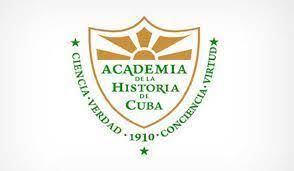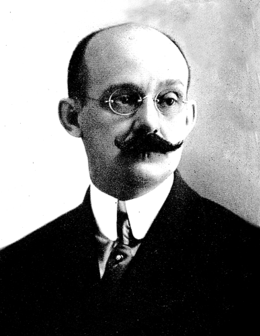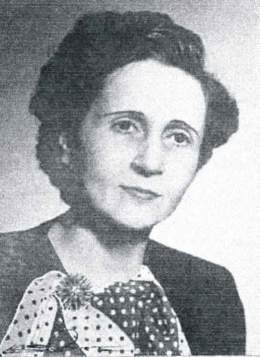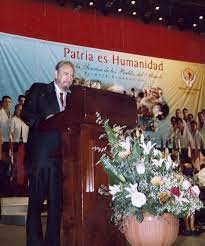
Havana ephemeris. 20th of August.
1900. Rita Montaner is born in Guanabacoa, Havana.

From her childhood stage, her life was related to music. In full adolescence she concluded studies of music theory, piano and singing. She officially debuted at the Regina theater in 1927, in the zarzuela “Niña Rita” by Ernesto Lecuona and Eliseo Grenet. She had previously sung in family halls and in concerts organized by prominent creators, including Jorge Anckermann, Eduardo Sánchez de Fuentes and Ernesto Lecuona. Five years before, she Rita was the first artist to sing on Cuban radio when she participated in the opening ceremony of the PWX.
As a performer, she inaugurated a style that would later be described as Afro-Cuban. Due to her personality and way of interpreting her musical creations, Rita became a kind of myth or legend.
Nicolás Guillén said of Rita Montaner, on March 28, 1942, in a tribute paid to her by the Popular Socialist Party: “There is not such an appropriate way to call her, if you want to do it with justice. From Cuba because her art truly expresses what is ours.” Guillén described her as "The Only One" because only she and no one else has made the Havana lot of the Cuban street, a universal category.
Her death occurred in Havana on April 17, 1958.
1910. By Presidential Decree, the creation of the Academy of Cuban History was decided, which was inaugurated on October 10 of that year.

Initially, it had an independent character, attached to the Secretary of Public Instruction and Fine Arts. In July 1914, it was granted its own legal personality and full civil capacity for all legal purposes.
The first period of the Academy of Cuban History spanned from 1910 to 1962. In the second half of 2010, the Council of State of the Republic of Cuba agreed to reestablish the Academy, which resumed its sessions on February 24, 2011.
The fundamental mission of the Association, as the highest authority in the investigation, study and promotion of History in the country, is to safeguard the Cuban historical legacy; For this reason, it cultivates, encourages, promotes, disseminates and verifies the study of the History of Cuba, in order to proclaim the historical truth of the nation and reaffirm the national identity.
1925. Armando André Alvarado, a journalist opposed to the dictatorial regime of Gerardo Machado, was assassinated in an attack.

He was born in Key West, Florida, on May 1, 1872.
In 1892, when he was twenty years old, he began to give his support to the organization of the war for the independence of Cuba.
Three years later, in the province of Matanzas, he contacted Antonio Maceo when he was carrying out the invasion from the East to the West. Under the orders of General Maceo he moved to Havana and carried out daring projects.
After 1902 he assumed the functions of a police officer in Havana.
In 1911 he was elected Representative on the Conservative ticket, for the term ending in 1915. He was twice a candidate for governor of the province of Havana and was president of the conservative party in the province and political editor of the newspaper El Día.
In April 1913, he was elected President of the Commission for the examination of the National Accounts and the verification and inspection of the National Debt.
1945. The Municipal Coat of Arms of Regla was ratified in the traditional form of Spanish heraldry.
It was devised by Eduardo Gómez Loaces, journalist and municipal historian, and drawn by the artist from Regla, Armando Arocha Vento. On the shield appears the key that since 1708 has been at the feet of the Virgin of Our Lady of Regla as Patron Saint of the Bay of Havana, the image of the newspaper "La Voz del Pueblo Cubano", as a symbol of the rebellion of the rulers, as well as a lamp, books and a pen that signify the contribution of the children of the territory to the national culture. The town of Regla, eminently industrial, is represented in the Monument to Work, the rudder and the anchor, the toothed wheel and the railway. All this under the tape with the words "Work, Union, Honor", which explain the idiosyncrasy of the Reglano because "honor is based on the work and union of all its inhabitants".
1975. María Teresa Freyre de Andrade dies in Havana. Prestigious personality of Cuban librarianship, she was the first director of the José Martí National Library, after the triumph of the Cuban Revolution.

One of her first contributions to her long intellectual career was the creation, in 1930, of the children's magazine entitled "Mañana", in which prominent progressive intellectuals of the Island collaborated.
Among the innovations that she carried out in the institution is the creation of what became known as a biblio-bus, a bus conditioned in order to bring books to the workers. This was an experience that gave many good results, for which it is said that she left a wide trail of knowledge and innovations within Cuban Library Science.
Her birth took place in Saint Augustine, Florida, United States, on January 27, 1896.
2005. Commander in Chief Fidel Castro speaks at the Karl Marx Theater in Havana at the graduation ceremony for the first 1,610 doctors who were trained at the Latin American School of Medicine.

He notes, “This graduation was a dream almost seven years ago. Today is proof of the ability of human beings to achieve the highest goals, and a real prize for those of us who believe that a better world is within our reach.”
He recalls how the creation of the Latin American School of Medicine was conceived.
He details: “The idea arose when the cables began to spread the news that Hurricane Mitch had taken the lives of more than 40,000 people in Central America. We proposed sending a medical force capable of saving as many lives each year as the hurricane had destroyed. We did not hesitate to do so even though we were still under the harshest blows of the special period.”
Fidel then specified: “Associated with the idea of supporting Central America with thousands of doctors, the Latin American School of Medicine was born immediately, to progressively replace the Cuban doctors who made up that force with doctors from those countries, when they were finishing their mission. Today that school, with its thriving development, supports the training of doctors not only in Central America but also in other regions of the world.”